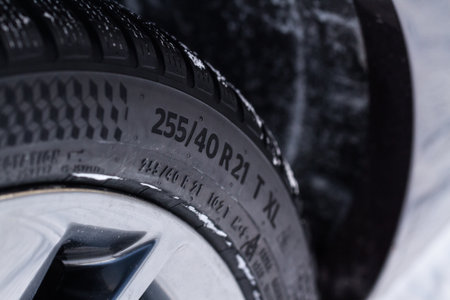1. Introduction
In racing and performance driving, tire wear plays a crucial role in determining lap times. As tires degrade, their grip, responsiveness, and overall performance change, directly affecting a drivers ability to maintain speed and control. Understanding how tire wear influences lap times and learning effective tire management strategies can help drivers extract the most performance while maximizing tire life.
How Tire Wear Affects Lap Times
Tire wear impacts lap times in several ways:
| Factor | Effect on Lap Time |
|---|---|
| Grip Reduction | Less traction, leading to slower cornering speeds |
| Increased Heat Buildup | Overheated tires become greasy, reducing performance |
| Uneven Wear | Imbalanced handling, making the car harder to control |
| Higher Rolling Resistance | Slower acceleration and lower top speeds |
As tires wear, they lose the sharp edges that provide grip, making it harder to maintain the same speed through corners. This forces drivers to slow down to compensate for the reduced traction, leading to longer lap times. Additionally, worn tires generate more heat, which can cause rubber degradation and further decrease performance.
Importance of Tire Management
Effective tire management is essential for optimizing lap times and maintaining consistency throughout a race or a track session. Drivers and teams must consider strategies such as:
- Maintaining proper tire pressures to ensure even wear
- Adjusting driving style to reduce excessive tire stress
- Monitoring tire temperatures to avoid overheating
- Rotating tires when possible to maximize longevity
By implementing these techniques, drivers can extend tire life while maintaining competitive lap times, ensuring that their tires perform optimally throughout an entire session.
2. The Impact of Tire Wear on Lap Times
As tires wear down, their ability to provide grip diminishes, leading to slower lap times and less predictable handling. Understanding how worn tires affect performance can help drivers adjust their driving style and setup to compensate for these changes.
Reduced Grip and Increased Lap Times
Tread depth plays a crucial role in how much traction a tire can provide. As the rubber wears away, the contact patch becomes less effective, causing the car to struggle for grip, especially in corners and under heavy braking. The loss of grip extends braking distances and reduces cornering speeds, increasing overall lap times.
Handling Effects: Understeer and Oversteer
Worn tires can drastically change a cars handling characteristics, often resulting in either understeer or oversteer, depending on which tires wear out the most.
Understeer
Understeer happens when the front tires lose grip before the rear tires, causing the car to push wide in corners. This is common when front tires wear out faster than the rears, leading to a lack of front-end responsiveness.
Oversteer
Oversteer occurs when the rear tires lose grip before the front tires, making the car feel loose and more prone to spinning out. This tends to happen when rear tires wear out faster, especially in rear-wheel-drive cars or when applying too much throttle in corners.
How Tire Wear Affects Different Aspects of Performance
| Effect | Impact on Performance |
|---|---|
| Braking Distance | Worn tires have less grip, increasing stopping distances. |
| Cornering Speed | Reduced traction makes it harder to carry speed through turns. |
| Steering Response | Understeer or oversteer tendencies may develop depending on wear patterns. |
| Acceleration | Less grip means increased wheel spin, reducing acceleration efficiency. |
By monitoring tire wear and adjusting driving techniques accordingly, drivers can minimize performance loss and maintain better control on track.
![]()
3. Factors That Contribute to Tire Wear
Several key factors determine how quickly your tires wear out. Understanding these factors can help you manage tire wear and maintain consistent lap times.
Driving Style
How you drive has a direct impact on tire wear. Aggressive driving with hard braking and sharp cornering generates excessive heat and friction, leading to faster wear. Smooth throttle inputs, controlled braking, and maintaining proper racing lines can help extend tire life.
Track Surface
Different tracks have varying surface textures that can affect tire wear. A rough surface increases friction and accelerates degradation, while a smoother track allows tires to last longer. Some tracks are also more abrasive due to the type of asphalt or concrete used.
| Track Type | Effect on Tire Wear |
|---|---|
| Smooth asphalt | Less wear, longer tire life |
| Rough or old asphalt | Higher wear, shorter tire life |
| Concrete sections | Can create uneven wear |
| Tracks with high-speed corners | More lateral load, increased wear |
Tire Compound
Your choice of tire compound plays a crucial role in wear rate. Softer compounds offer better grip but wear out faster, while harder compounds last longer but provide less traction. Choosing the right compound for your race conditions is essential for balancing performance and longevity.
Temperature
Track and ambient temperatures influence how tires perform and degrade. If the tires get too hot, the rubber can break down faster, leading to premature wear. Conversely, tires that are too cold may not perform optimally, causing uneven wear.
| Temperature Condition | Effect on Tires |
|---|---|
| High track temperatures | Surface overheating, faster wear |
| Low track temperatures | Reduced grip, uneven wear |
| Optimal tire temperature | Balanced wear and grip |
Tire Pressures
Proper tire pressures are essential for maintaining an even contact patch and minimizing irregular wear. Pressures that are too low can cause excessive flexing, leading to higher temperatures and increased wear. High pressures reduce grip and can lead to excessive center wear.
| Pressure Condition | Effect on Tire Wear |
|---|---|
| Too low | More heat, quicker wear |
| Too high | Less grip, uneven wear |
| Optimal | Balanced tread wear and performance |
4. Techniques to Maximize Tire Life
Maximizing tire life is crucial for maintaining consistent lap times and reducing tire-related costs. By following best practices such as smooth driving inputs, maintaining proper tire pressures, and optimizing weight distribution, you can significantly extend the life of your tires while maintaining performance.
Smooth Driving Inputs
Aggressive driving with harsh acceleration, braking, and steering can lead to unnecessary tire wear. To preserve your tires:
- Accelerate smoothly: Gradually apply throttle to minimize wheel spin and excessive strain on the tires.
- Brake gradually: Avoid excessive braking force that can cause premature tire degradation.
- Steer with precision: Smooth steering inputs reduce lateral tire scrubbing, which helps prevent excessive wear.
Proper Tire Pressures
Maintaining the correct tire pressures ensures optimal tire performance and longevity. Incorrect pressures can cause uneven wear and reduce grip. Here’s a quick reference:
| Tire Pressure Issue | Effect on Tire Life | Solution |
|---|---|---|
| Overinflated | Excessive center wear, reduced contact patch, and lower grip | Reduce pressure to recommended level |
| Underinflated | Increased shoulder wear, higher rolling resistance, and overheating | Inflate to the proper range |
| Uneven pressures | Unbalanced handling and irregular wear | Check and adjust all tires evenly |
Effective Weight Distribution
Proper weight balance reduces excess load on specific tires, promoting even wear. You can optimize weight distribution by:
- Adjusting suspension settings: Proper alignment and suspension tuning help distribute weight evenly across all tires.
- Managing fuel load: A full or unevenly distributed fuel tank affects handling and tire wear.
- Avoiding sudden weight shifts: Smooth transitions minimize excessive pressure on the tires during turns and braking.
By implementing these techniques, you can extend the lifespan of your tires, improve consistency in lap times, and enhance overall performance on the track.
5. V. Tire Maintenance and Monitoring
Importance of Regular Tire Inspections
Regular tire inspections are essential to maintaining optimal performance and ensuring even wear. Checking your tires before and after each session can help identify issues early, such as uneven wear, low tread depth, or potential damage. Look for visible signs like cracks, cuts, or embedded debris, as these can impact both safety and lap times.
Tire Rotation and Why It Matters
Tire rotation is a key part of extending tire life and maintaining consistent performance. By periodically switching the position of the tires, you ensure even wear across all four wheels. Different tracks and driving styles can cause certain tires to wear faster than others, making a proper rotation strategy crucial.
Recommended Tire Rotation Patterns
| Drive Type | Recommended Rotation Pattern |
|---|---|
| Front-Wheel Drive | Switch front tires to the rear in a straight line and cross the rear tires to the front. |
| Rear-Wheel Drive | Switch rear tires to the front in a straight line and cross the front tires to the rear. |
| All-Wheel Drive | Use a crisscross pattern (moving front-left to rear-right and vice versa). |
Alignment Adjustments for Optimal Wear
Proper wheel alignment plays a major role in how evenly your tires wear. Misalignment can cause premature wear on one edge of the tire, leading to a decrease in grip and performance. Regular alignment checks help ensure that your tires maintain the best possible contact with the track surface.
Signs of Misalignment
- Vehicle pulling to one side while driving
- Uneven or rapid tire wear
- Steering wheel off-center when driving straight
- Vibrations while driving at high speeds
Consistently monitoring tire condition and keeping up with maintenance routines can make a significant difference in lap times and tire longevity. By inspecting tires regularly, following rotation schedules, and ensuring proper alignment, you maintain peak performance while maximizing tire life.


